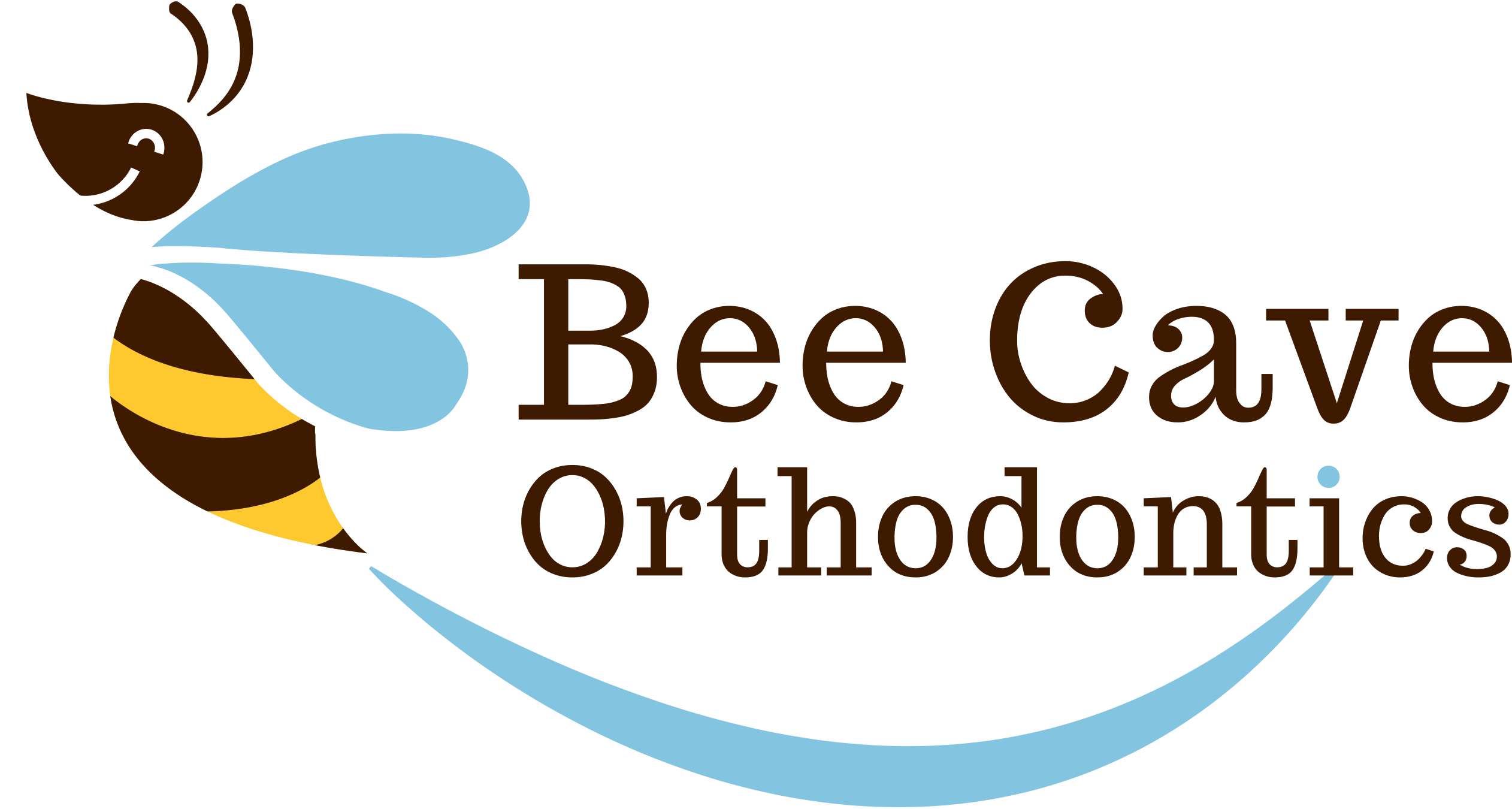7&Up Bee Club
All kids should get a checkup with an orthodontist by no later than age seven.
To have a healthy smile that’s good for life®, your child needs teeth and jaws that are properly aligned. The American Association of Orthodontists (AAO) recommends that your child get a checkup with an orthodontist at the first recognition of the existence of an orthodontic problem, but no later than age seven.
By then, your child has enough permanent teeth for an orthodontist to determine whether an orthodontic problem exists or is developing. Putting off a checkup with an orthodontist until a child has lost all baby teeth could be harmful.
Some orthodontic problems may be easier to correct if they’re found early. A checkup no later than age seven gives your orthodontist the opportunity to recommend the appropriate treatment at the appropriate time. If early treatment is in order, the orthodontist may be able to achieve results that may not be possible once the face and jaws have finished growing.
© 2015 American Association of Orthodontists.
There’s an optimal time to begin orthodontic treatment. To take advantage of that timing, it’s important that children have their initial evaluation with Dr. Da Silveira around age seven, as recommended by the American Association of Orthodontists.
Most children won’t need treatment at this age, but it helps establish a baseline to monitor your child’s growth and development. For young patients that aren’t ready to begin treatment, we invite them to join our 7&Up Bee Club.

Welcome to the Club
The 7&Up Bee Club is designed for our patients who aren’t ready for orthodontic treatment yet. At your first appointment with us, you’ll get a t-shirt and a membership card. At each appointment, you’ll have a chance to play our Spin and Win wheel to win an awesome prize.
7&Up Bee Club Members can participate in fun contests throughout the year and will be invited to our annual patient appreciation party. This encourages our young friends to have fun while waiting for their turn to get their own Bee Happy Smiles.
7&Up Bee Club Benefits
As a courtesy to our patients, we will call you every six to 12 months to schedule a complimentary evaluation to check for the following:
- Baby teeth are falling out when they should and that the permanent teeth have available space to come in.
- If any problems should be addressed such as crowding, correction of harmful oral habits such as thumb sucking or finger sucking, or bad bites that are developing that can influence the jaws to grow unfavorably.
- Identification of any dental or jaw growth problems which would benefit from early treatment before they get too complicated.
- How appearance can be improved by creating a more pleasing arrangement of the teeth, lips and face.
When Dr. Da Silveira determines that orthodontic problems are significant enough to require treatment, she’ll develop a plan especially for your child. In doing so, length of treatment, discomfort, and treatment costs can be reduced.
Early Orthodontic Treatment
- What’s the difference between early orthodontic treatment and regular orthodontic treatment?
- Why might your child need early treatment?
- How will early treatment benefit your child in the long run?
These are just a few of the questions on the topic of early orthodontic treatment for children. The American Association of Orthodontists recommends that children see an orthodontist as early as age seven. At this point, your orthodontist can evaluate whether your child will need orthodontic treatment.
Early treatment (also known as Phase One), typically begins around age eight or nine (Phase Two will begin around age 11 or older). The goal of early treatment is to correct the growth of the jaw and certain bite problems, such as underbite. Early treatment also helps to make room for permanent teeth to come in properly, lessening the chance of extractions in the future.
Signs Your Child May Need Early Treatment
- Early or late loss of baby teeth (your child should typically start losing teeth around age five, and will have all permanent teeth around age 13)
- Difficulty chewing and/or biting
- Mouth-breathing
- Your child continues sucking his or her thumb after age five
- Speech impediments
- Protruding teeth (the top teeth and the bottom teeth extend away from each other)
- Teeth that don’t come together in a normal manner or even at all
- Shifting of the jaw when your child opens or closes his or her mouth (crossbites)
- Crowded front teeth around age seven or eight
How Early Treatment Helps
Orthodontic problems such as crowding of the teeth, too much space between the teeth, jaw growth problems, protruding teeth, and bad bites can be inherited or caused by injury to the mouth, early or late loss of baby teeth, or thumb-sucking habits.
Most children lose all their baby teeth by age 13, and by the end of their teen years, the jaw bones will harden and stop growing. Orthodontic procedures for adults often take more time and can involve tooth extraction or oral surgery. Receiving early orthodontic treatment as a child can help prevent the need for orthodontics as an adult, leaving little to no chance of extraction or surgery in the future.
If your child is between the ages of seven and eight and shows signs of needing orthodontic care, or if you have been directed by your family dentist to visit the orthodontist, please contact our practice and schedule an appointment. Our team will provide your child with an initial exam, and discuss with you the best steps to take toward caring for your child’s smile.
